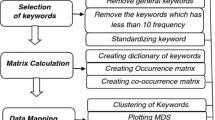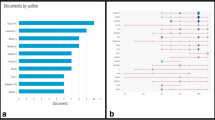Abstract
In the highly competitive world, there has been a concomitant increase in the need for the research and planning methodology, which can perform an advanced assessment of technological opportunities and an early perception of threats and possibilities of the emerging technology according to the nation’s economic and social status.
This research is aiming to provide indicators and visualization methods to measure the latest research trend and aspect underlying scientific and technological documents to researchers and policy planners using “co-word analysis”. Information Security field is a highly prospective market value. In this paper, we presented an analysis Information Security.
Co-word analysis was employed to reveal patterns and trends in the Information Security fields by measuring the association strength of terms representatives of relevant publications or other texts produced in the Information Security field. Data were collected from SCI and the critical keywords could be extracted from the author keywords. These extracted keywords were further standardized. In order to trace the dynamic changes in the Information Security field, we presented a variety of technology mapping. The results showed that the Information Security field has some established research theme and also rapidly transforms to embrace new themes.
Similar content being viewed by others
References
Barabasi, A. L. (2002), Statistical mechanics of complex networks, Reviews of Modern Physics, 74: 47–97.
Bhattacharya, S., Basu, R. K. (1998), Mapping a research area as the micro level using co-word analysis, Scientometrics, 43(3): 359–372.
Callon, M., Law, J., Rip A. (1986), Mapping the Dynamics of Science and Technology: Sociology of Science in the Real World. London: Macmillan.
Galvez, C., Moya-Anegón, F. (2007), Standardizing formats of corporate source data, Scientometrics, 70(1): 3–26.
Chen, C. (2004), Searching for intellectual turning points: Progressive knowledge domain visualization, PNAS Early Edition.
Ding, Y., Chowdhury, G. G., Foo, S. (2000), Journal as markers of intellectual space: Journal co-citation analysis of information retrival area, Scientometrics, 47(1): 55–73.
Ding, Y., Chowdhury, G. G., Foo, S. (2001), Bibliography of information retrieval research by using coword analysis, Information Processing & Management, 37: 817–842.
Freeman, L. (1979), Centrality in social networks conceptual clarification, Social Network, 1: 215–239.
Gladwell, M. (2000), The Tipping Point, New York: Little, Brown.
He, Q. (1999), Knowledge discovery through co-word analysis, Library Trends, 48(1): 131–159.
Law, J., Whittaker, J. (1992), Mapping acidification research: A test of the co-word method, Scientometrics, 23(3): 417–461.
Leydesdorff, L. (2007), Mapping interdisciplinary at the interfaces between the Science Citation Index and the Social Science Citation Index, Scientometrics, 71(3): 391–405.
Lin, C. T., Chiang, C. T. (2007), Evaluating the performance of sponsored Chinese herbal medicine research, Scientometrics, 70(1): 67–84
Moon, Y. H. (2004), Monitoring and Early Warning of Technological Progress, First Workshop of the Research Planning Assessment Study Society, KISTI.
Morris, S. A. (2005), Manifestation of emerging specialties in journal literature: a growth model of papers, references, aexemplars, bibliographic coupling, co-citation, and clustering coefficient distribution, Journal of the American Society for Information Science and Technology, 56(12): 1250–1273.
Noyons, E. C. M., VAN Raan, A. F. J. (1998), Advanced mapping of science and technology, Scientometrics, 41(1–2): 61–76.
Oh, S. J., Lee, D. G. (2004), Reconstruction and Development Direction of the Science & Technology Innovation System, Public Forum on Reorganization of the National Science & Technology Innovation System.
Peters, H. P. F., VAN Raan, A. F. J. (1993), Co-word based science maps of chemical engineering, Part I: Representations by direct multidimensional scaling, Research Policy, 22: 23–45.
Tijssen, R. J. W. (2007), Africa’s contribution to the worldwide research literature: New analytical perspectives, trends, and performance indicators, Scientometrics, 71(2): 303–327.
Yoon, M. S., Lee, W. H., Oh, H. Y., Kim, Y. M. (2004), Methodology of S&T Knowledge Map and Indicators for Ex-Ante Evaluation of National R&D Program, STEPI.
Author information
Authors and Affiliations
Corresponding author
Rights and permissions
About this article
Cite this article
Lee, W.H. How to identify emerging research fields using scientometrics: An example in the field of Information Security. Scientometrics 76, 503–525 (2008). https://doi.org/10.1007/s11192-007-1898-2
Received:
Published:
Issue Date:
DOI: https://doi.org/10.1007/s11192-007-1898-2




